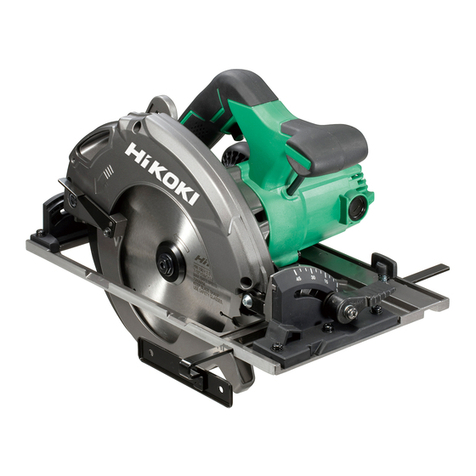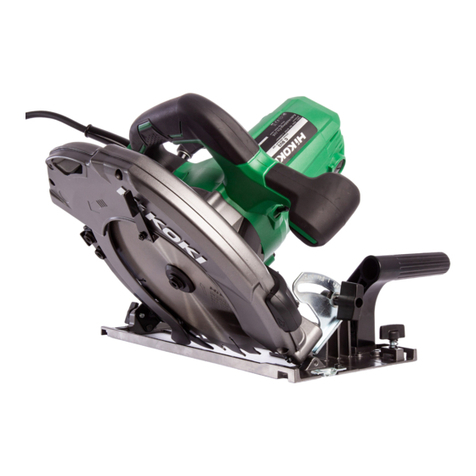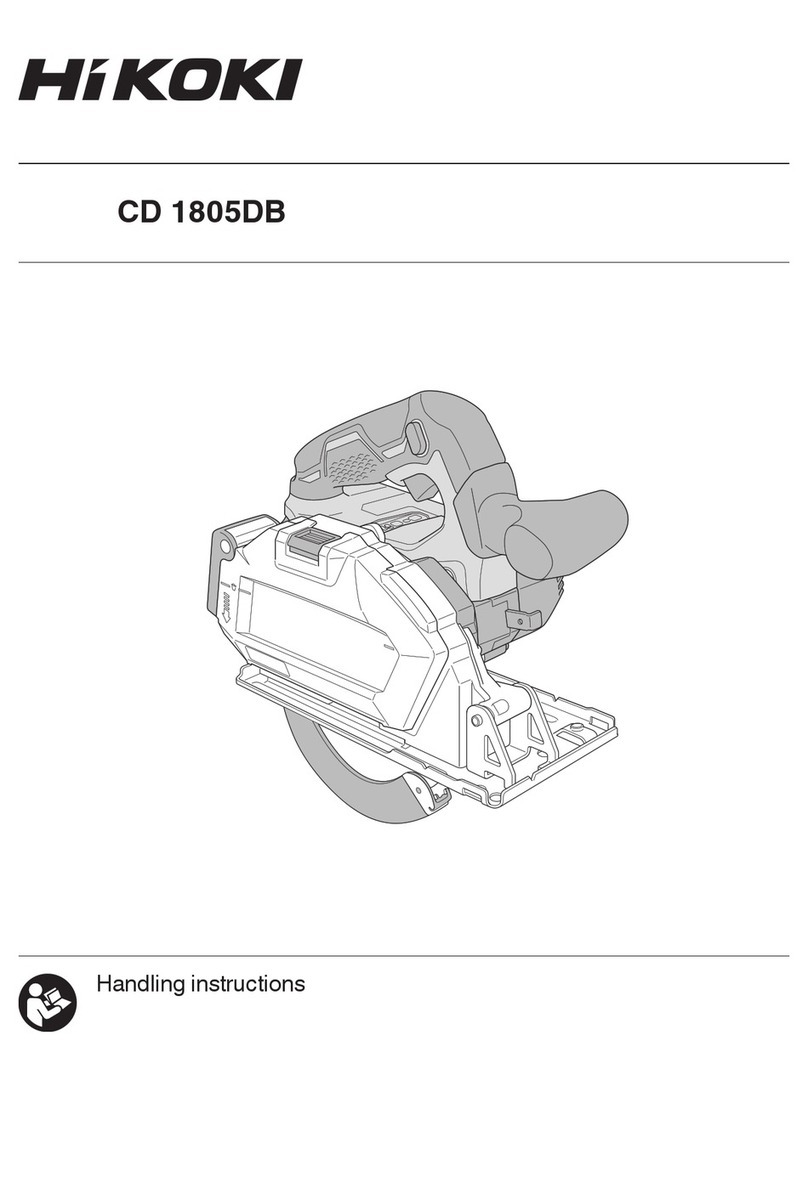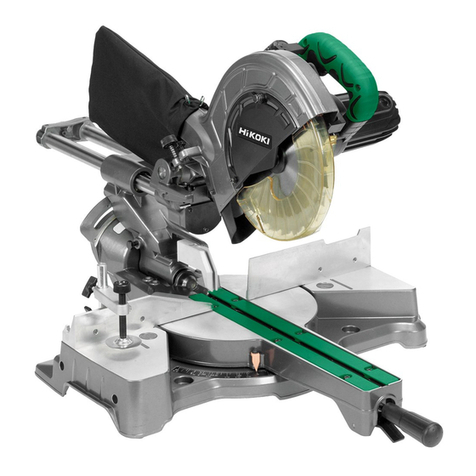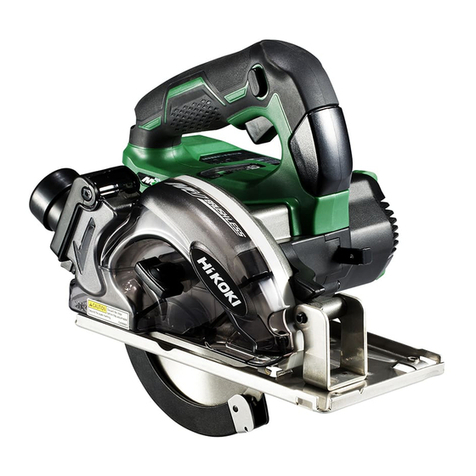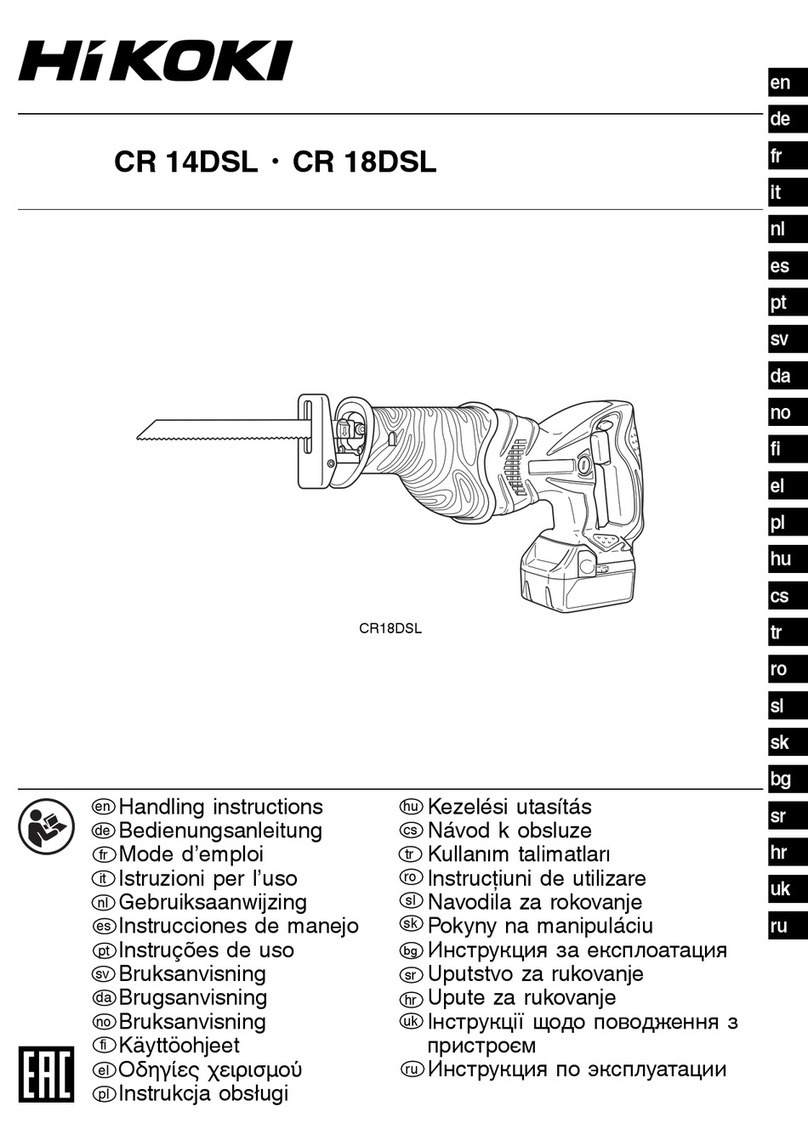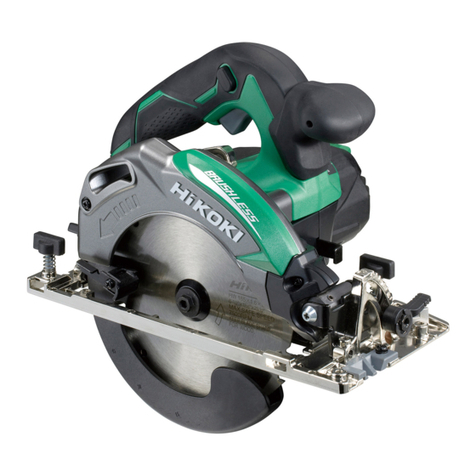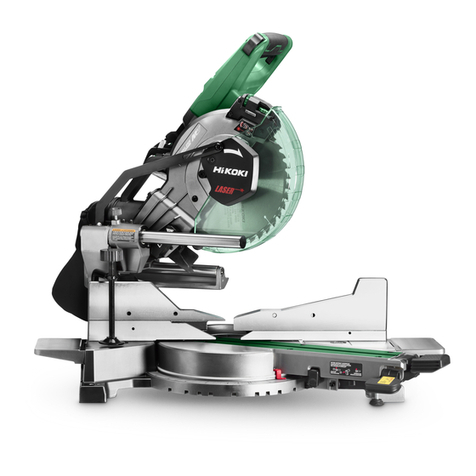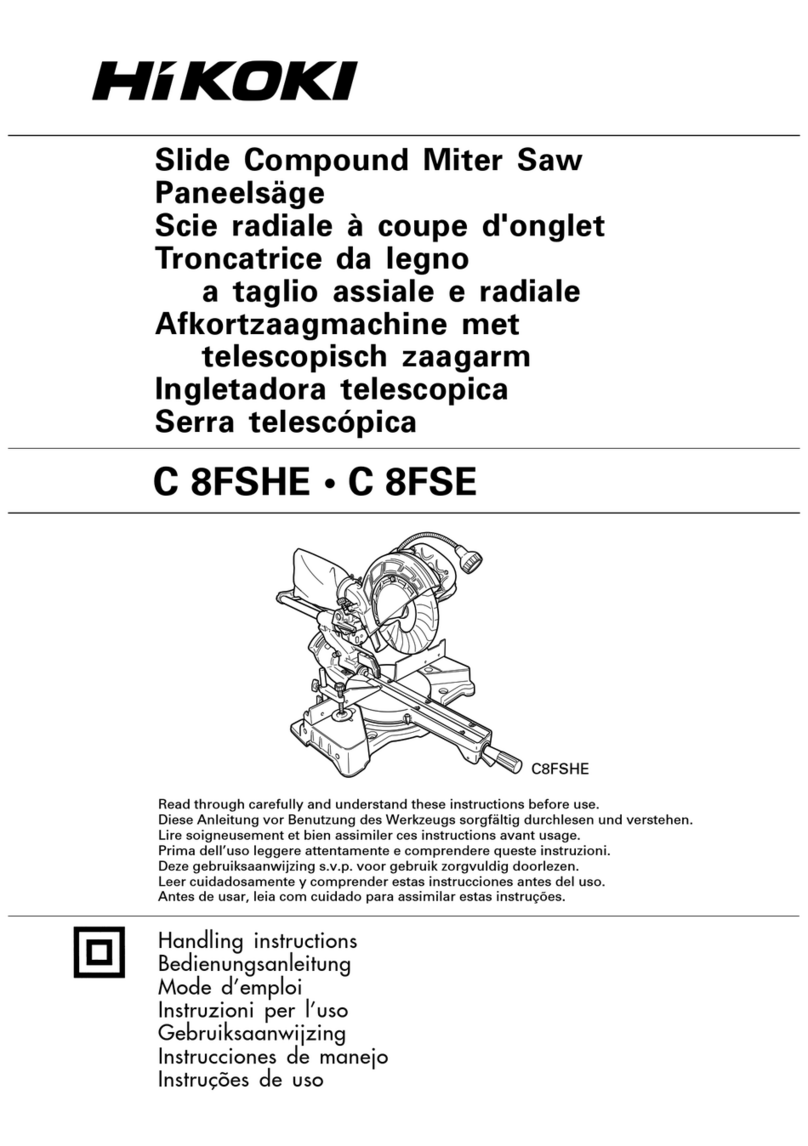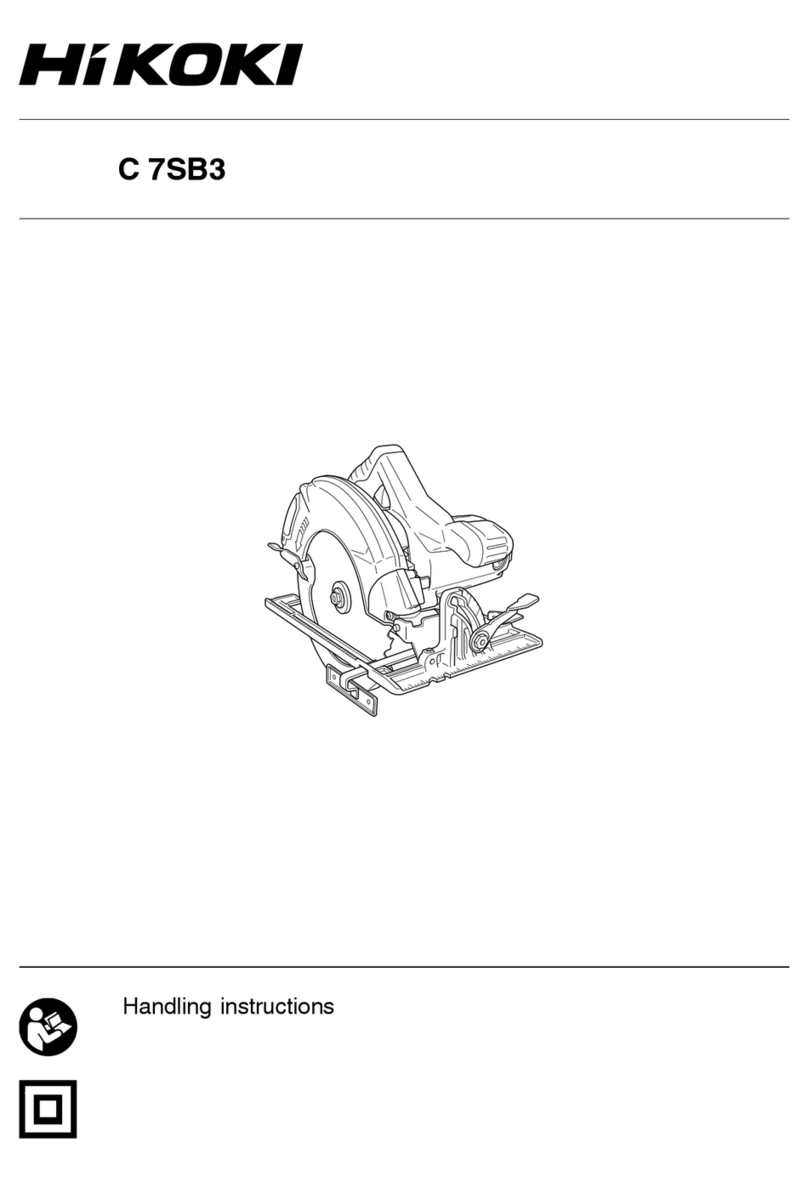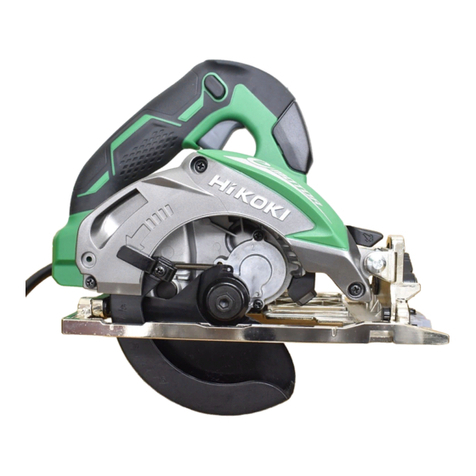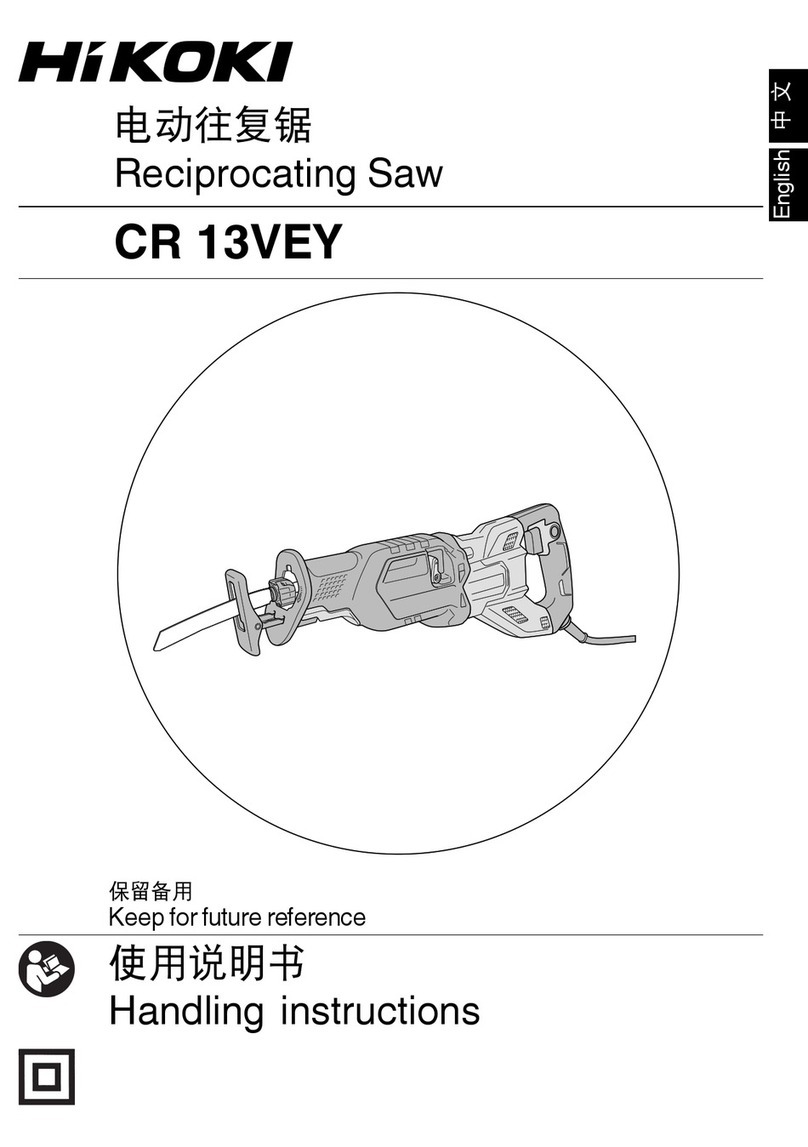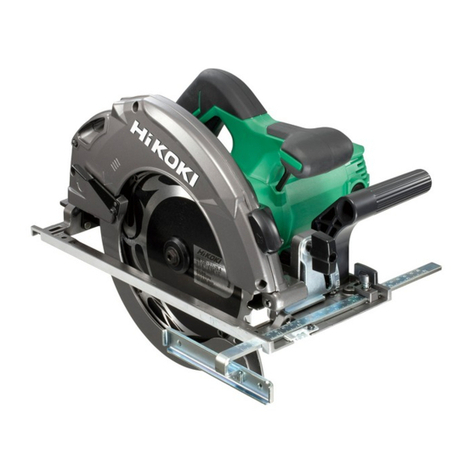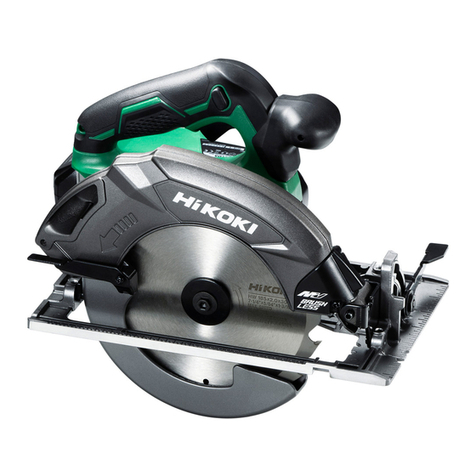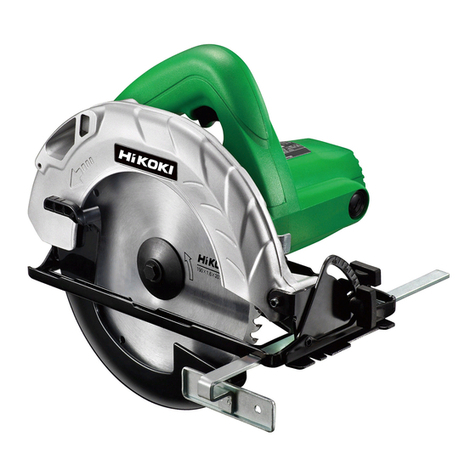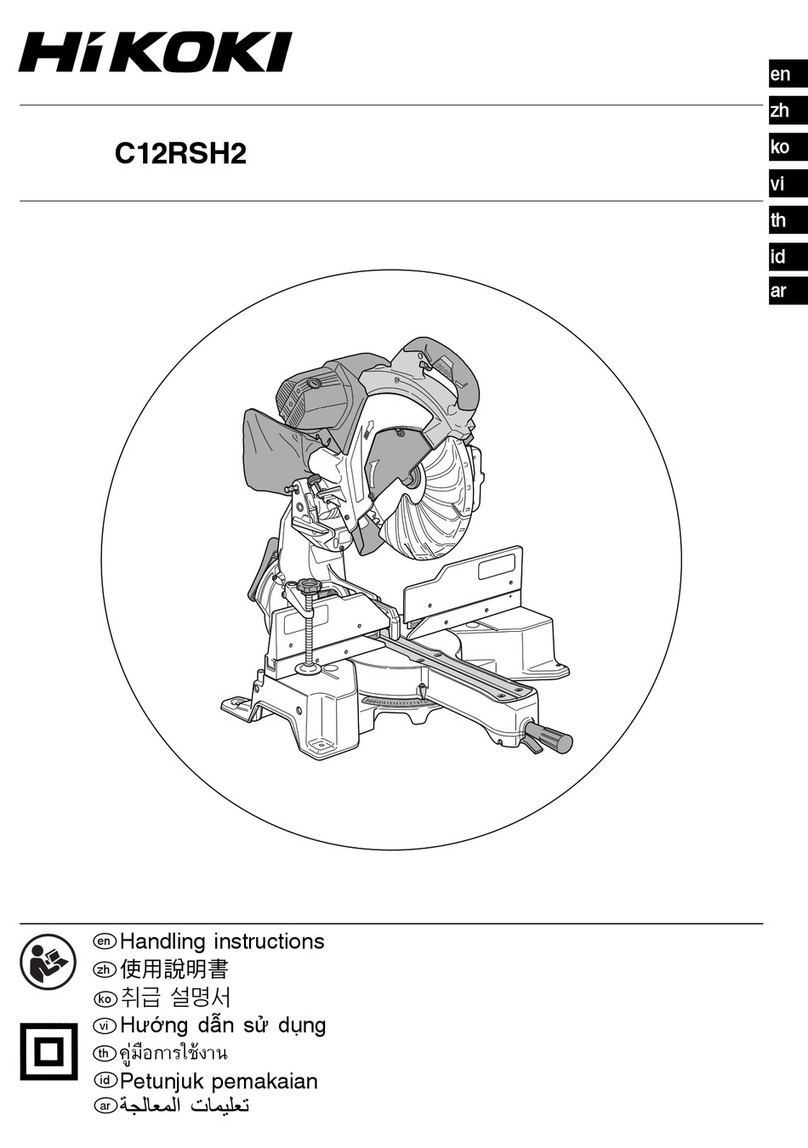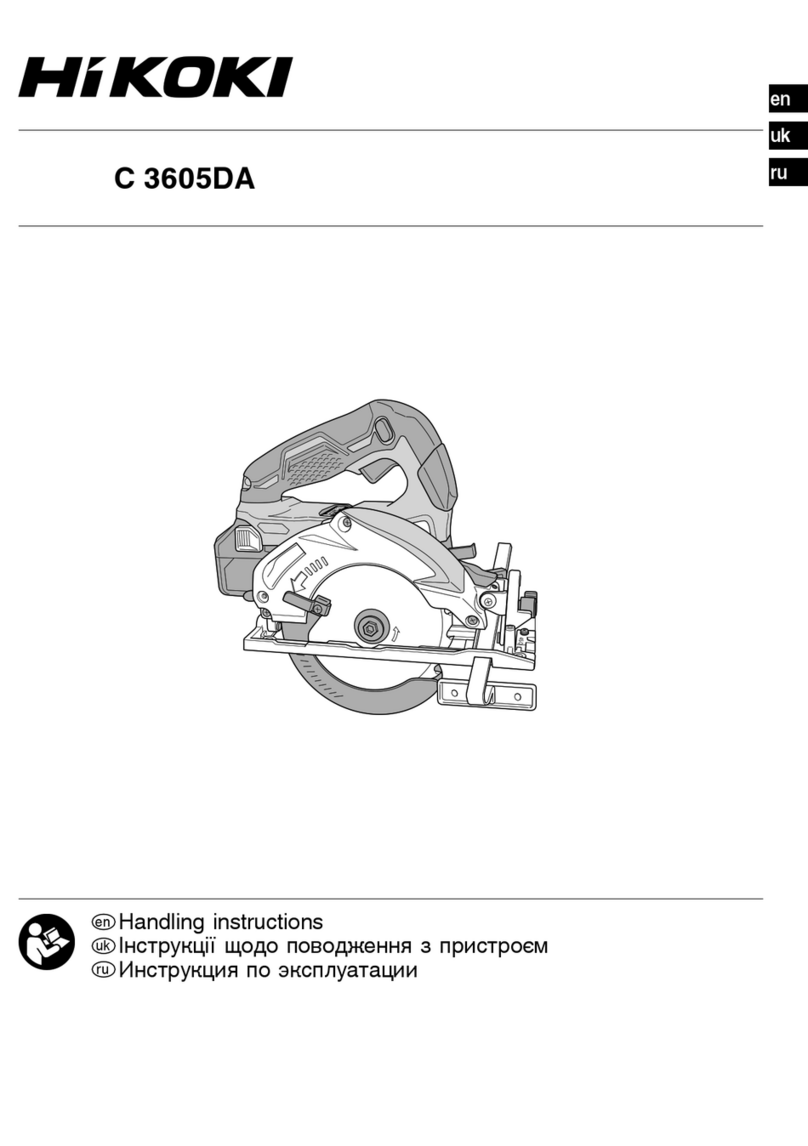
9
English
If you cut a large pipe, large block of wood, etc., that
exceeds the cutting capacity of a blade; there is a risk
thattheblademaycontactwiththeinnerwallofthepipe,
wood,etc.,resultingindamage.(Fig. 10)
18. Never apply any unreasonable force to the saw blade
when cutting. Doing so can easily break the blade.
19.The motor can be locked sometimes, depending
on the combination of the material to be cut and the
blade. Whenever the motor gets locked, switch it o
immediately.
20. Use clamps or another practical way to secure and
support the workpiece to a stable platform. (Fig. 11)
Holding the work by hand or against your body leaves it
unstable and may lead to loss of control.
21.When cutting metallic materials, use an appropriate
cuttinguid(spindleoil,soapywater,etc.)toprolongthe
bladeʼsservicelife.
22. Delay the feed speed when cutting the material into
small circular arcs. An unreasonably fast feed may break
the blade.
23. Plunge cutting
○ Avoid plunge cutting for metallic materials. This can
easily damage the blade.
○ Never pull the switch trigger while the tip of the saw
bladetipispressedagainstthematerial.Ifyoudoso,the
blade can easily be damaged when it collides with the
material.
○ Makeabsolutelysurethatyoucutslowlywhileholding
thebodyrmly.Ifyouapplyanyunreasonableforceto
thesawbladeduringthecuttingoperation,thebladecan
easily be damaged.
24.Keep the light ON during cutting operation only. If
it is lit ON in other cases, the main body switch can
be inadvertently turned ON, resulting in unexpected
accidents.
25. Do not expose directly your eye to the light by looking
into the light.
Ifyoureyeiscontinuouslyexposedtothelight,youreye
will be hurt.
26. Never touch moving parts.
Neverplaceyourhands,ngersorotherbodypartsnear
the tool’s moving parts.
27. Never operate without all guards in place.
Never operate this tool without all guards or safety
features in place and in proper working order. If
maintenance or servicing requires the removal of a
guardorsafetyfeature,besuretoreplacetheguardor
safety feature before resuming operation of the tool.
28.NEVERleavetoolrunningunattended.Turnpowero.
Don’t leave tool until it comes to a complete stop.
29. The power tool is equipped with a temperature
protection circuit to protect the motor. Continuous work
maycausethetemperatureoftheunittorise,activating
the temperature protection circuit and automatically
stoppingoperation.Ifthishappens,allowthepowertool
to cool before resuming use.
30. Do not give a strong shock to the switch panel or break it.
It may lead to a trouble.
31. Do not use the product if the tool or the battery terminals
(battery mount) are deformed.
Installing the battery could cause a short circuit that
could result in smoke emission or ignition.
32. Keep the tool’s terminals (battery mount) free of swarf
and dust.
○ Prior to use, make sure that swarf and dust have not
collected in the area of the terminals.
○ Duringuse, trytoavoidswarfor duston thetool from
falling on the battery.
○ Whensuspendingoperationorafter use,donotleave
the tool in an area where it may be exposed to falling
swarf or dust.
Doing so could cause a short circuit that could result in
smoke emission or ignition.
CAUTION ON LITHIUM-ION BATTERY
Toextendthelifetime,thelithium-ionbatteryequipswiththe
protection function to stop the output.
In the cases of 1 to 3 described below, when using this
product,evenifyouarepullingthe switch,themotor may
stop. This is not the trouble but the result of protection
function.
1. Whenthebatterypowerremainingrunsout,themotor
stops.
Insuchacase,chargeitupimmediately.
2. If the tool is overloaded, the motor may stop. In this
case,releasetheswitchoftoolandeliminatecausesof
overloading.Afterthat,youcanuseitagain.
3. If the battery is overheated under overload work, the
battery power may stop.
Inthiscase, stop using the batteryand let the battery
cool.Afterthat,youcanuseitagain.
Furthermore,pleaseheedthefollowingwarningandcaution.
WARNING
In order to prevent any battery leakage, heat generation,
smokeemission,explosionandignitionbeforehand,please
be sure to heed the following precautions.
1. Make sure that swarf and dust do not collect on the
battery.
○ Duringworkmakesurethatswarfanddustdonotfallon
the battery.
○ Makesurethatanyswarfanddustfallingonthepower
tool during work do not collect on the battery.
○ Donotstoreanunusedbatteryinalocationexposedto
swarf and dust.
○ Beforestoringabattery,removeanyswarfanddustthat
may adhere to it and do not store it together with metal
parts(screws,nails,etc.).
2. Do not pierce battery with a sharp object such as a
nail,strikewithahammer,stepon,throworsubjectthe
battery to severe physical shock.
3. Do not use an apparently damaged or deformed battery.
4. Do not use the battery in reverse polarity.
5. Do not connect directly to an electrical outlets or car
cigarette lighter sockets.
6. Do not use the battery for a purpose other than those
specied.
7. If the battery charging fails to complete even when a
speciedrechargingtimehaselapsed,immediatelystop
further recharging.
8. Do not put or subject the battery to high temperatures or
highpressuresuchasintoamicrowaveoven,dryer,or
high pressure container.
9. Keepawayfromreimmediatelywhenleakageorfoul
odor are detected.
10. Do not use in a location where strong static electricity
generates.
11.If there is battery leakage, foul odor, heat generated,
discoloredordeformed,orinanywayappearsabnormal
duringuse,rechargingorstorage,immediatelyremoveit
fromtheequipmentorbatterycharger,andstopuse.
12.Donot immerse the batteryor allow any uids toow
inside. Conductive liquid ingress, such as water, can
causedamageresultinginreorexplosion.Storeyour
batteryinacool,dryplace,awayfromcombustibleand
ammableitems.Corrosive gas atmospheres must be
avoided.
CAUTION
1. If liquid leaking from the battery gets into your eyes,
do not rub your eyes and wash them well with fresh
clean water such as tap water and contact a doctor
immediately.
Ifleftuntreated,theliquidmaycauseeye-problems.
2. Ifliquidleaksontoyourskinorclothes,washwellwith
clean water such as tap water immediately.
There is a possibility that this can cause skin irritation.
0000Book_CR36DA_EU.indb 9 2019/03/07 18:22:37
